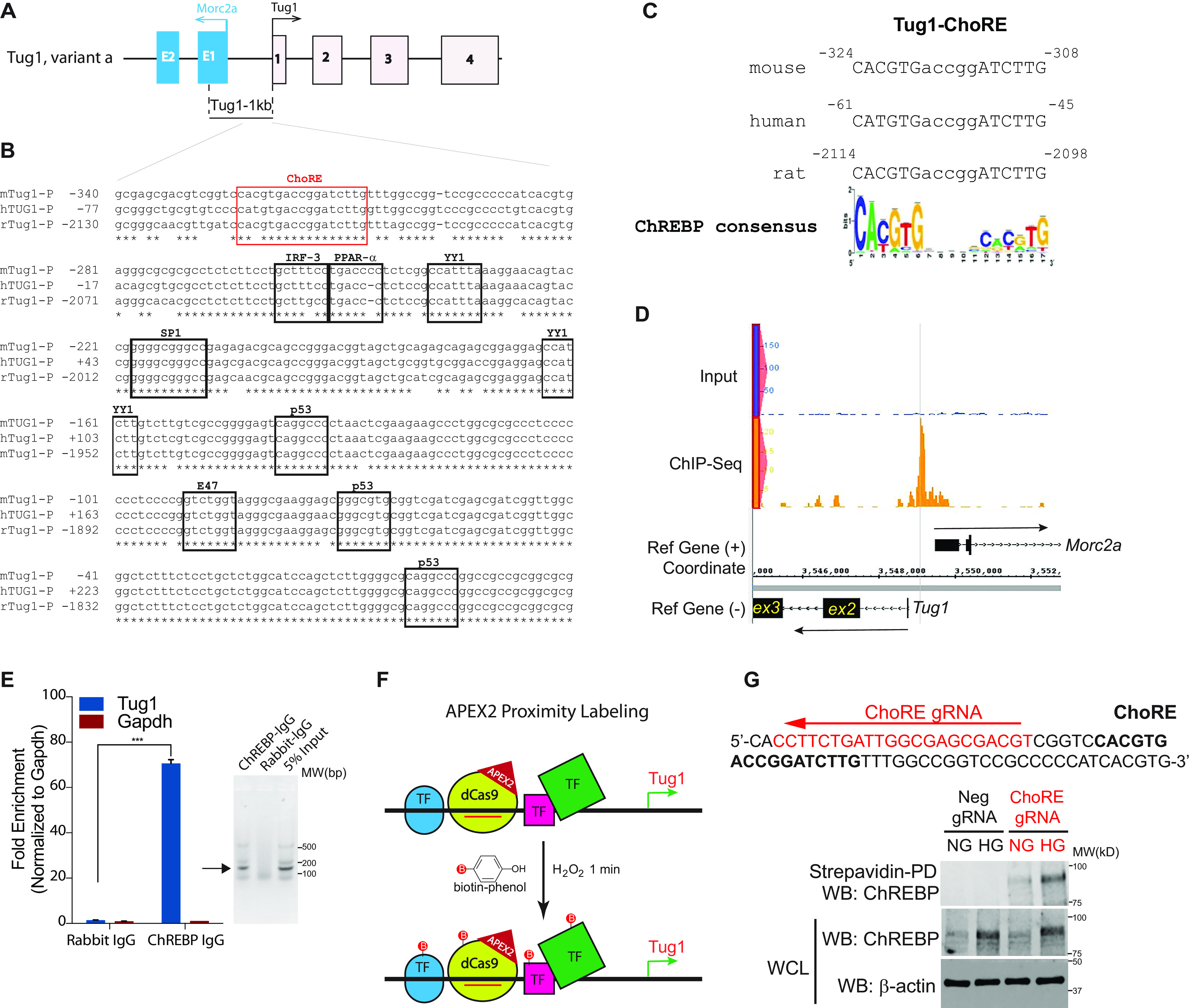Figure 2.

Identification and validation of a consensus, conserved ChoRE in mouse Tug1 promoter region. A, genomic structure of mouse Tug1 (variant a in GRCm38 assembly mm10) and the divergent gene Morc2a. 1 kb upstream of the Tug1 TSS is indicated. B, in silica analysis of 360 bp from the Tug1 proximal promoters in different species. Sequence alignment of Tug1 promoter regions from mouse (m), human (h), and rat (r). Consensus binding sites for the indicated transcription factors are shown. The potential ChoRE for ChREBP binding is highlighted in a red box. C, potential ChoREs in Tug1 promoters of mouse, human, and rat are consensus binding sites for ChREBP. D, ChREBP ChIP-Seq in mouse white adipocytes identified a specific peak centered at the potential ChoRE in the Tug1 promoter. E, left, ChIP-qPCR validation of ChREBP binding to Tug1 promoter in cultured mouse podocytes (n = 3). Data are presented as mean ± S.E.M. ***, p < 0.001. Right, analysis of ChIP-qPCR products on 1.2% agarose gel in sodium borate buffer. Expected bands are indicated with an arrow. F, a simplified diagram showing APEX2 peroxidase proximity labeling with a gRNA (red line) that guides a dCas9-APEX2 fusion protein to bind to the Tug1 promoter and mediates the oxidization of biotin-phenol in the presence of H2O2. Labeled proteins and transcription factors (TF; represented by green, blue, and pink shapes) are present in the proximity of Tug1 promoter-gRNA-dCas9-APEX2 complex. G, a gRNA that targets sequences adjacent to the ChoRE element in the Tug1 promoter results in ChREBP proximity labeling under high glucose. Upper, sequence of Tug1 promoter region with ChoRE element highlighted in boldface and the gRNA targeting site on the antisense strand highlighted in red. Lower, immunoblots of strepavidin pulldown (PD) or WCL from proximity labeling of stable cells cultured under NG or HG with a gRNA-targeting ChoRE (ChoRE gRNA) or a nontargeting gRNA (Neg gRNA).
